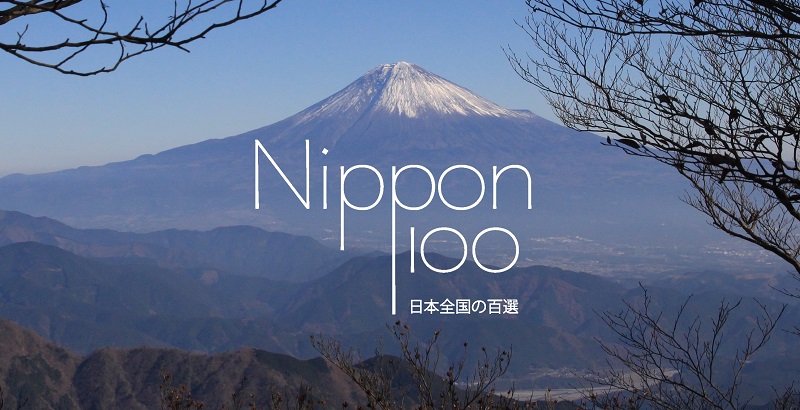Mount Yoshino is located in the center of Nara prefecture, about two hours by train from the former capital city of Japan. The place is well known for its huge cherry blossom in Spring, with more than 30k trees on the mountain side. But Yoshino is also the birthplace of Shugendo, a mountain worship that began 1300 years ago with the ascetic and mystic En-no-Gyoja. A sacred World Heritage area, protected by Zao Gongen – Shugendo main divinity, which is also a great autumn destination. And one of the Heisei 100 landscapes!
Following the 100 landscapes of Heisei Era list, just as we do, is a great way to discover many impressive or strongly spiritual places – or sometimes places that are both at the same time, as Yoshino. A sacred mountain in famous Nara prefecture but somehow off the beaten path. Mount Yoshino is two hours away from Nara city, and slightly less from Osaka, in the rural and mountainous center of the prefecture.
Interestingly enough, from what we read in the past years about Japan, Wakayama’s Kumano Kodo seems to be far more known among foreign travelers than Yoshino. Yet the pilgrimage way starts in this very sacred mountain – Yoshinoyama.
Yoshino, birthplace of Shugendo
Once upon a time, on a sacred mountain… Everything began during the beginning of Nara period (710-794), when En-no-Gyoja settled in the mountainous area of Yoshino. He went through a long and severe Buddhist asceticism and finally sculpted the very first effigy of Zao Gongen, the mountain god and main figure of Shugendo, after he saw him in a vision. A sculpture he made out of cherry tree wood. Which also explains why cherry trees are so important in the area nowadays.





Mount Yoshino is a part of the 2004 World Heritage nominated area known as the Sacred Sites and Pilgrimage Routes in the Kii Mountain Range. These Shugendo related sites are to be found in Yoshino-Omine area for Nara prefecture, and around Kumano-Sanzan and Koyasan for Wakayama prefecture.
The main feature of Yoshino, which leads to every other characteristics, is definitely Shugendo. This ancient syncretism, mixes Buddhism beliefs, a more animist mountain cult and worship kami – the Japanese shinto divinities. After its creation by En-no-Gyoja, Shugendo was divided between two branches: the Yoshino-Kumano in Kansai and the Dewa sanzan one in Tohoku.

Shugendo is a living ascetic path, followed by the yamabushi – mountain pilgrims. They are men only, Japanese or not, and walked each year in July to reach Mount Omine – the sacred heart of Yoshino area – from Kinpusen-ji temple. The way is a succession of ascetic training to strengthen both their mind and body.
The main road followed by the pilgrims is the Omine-Okugake one. And the most devoted ones, in the past, were walking toward the ocean through the Kumano-Kodo paths. A mountainous and spiritual journey of more than 90 kilometers in the nature.




The Kinpusenji temple
The center of Shugendo in Yoshino is the Kinpusen-ji temple. Thanks to its 34 meters, the temple is the second biggest wooden building in Japan, just after Nara’s Todai-ji. It was founded by En-no-Gyoja on the mountain crest and house the most impressive effigies of Zao Gongen.


 |
 |




Zao Gongen quite terrifying figure was carved by En-no-Gyoja after a vision he had during his asceticism. He dreamed that the god came to save the men who were constantly fighting. Zao Gongen is said to be the Buddhas of past, present and future, and at the same time Mount Yoshino’s personified deity. Because En-no-Gyoja first carved and worshiped an effigy out of cherry tree, that kind of tree had been at the heart of his cult.
The cherry blossom time, in late Spring, is the moment when Mount Yoshino gets really crowded. The area hosts 30.000 cherry trees – and more are planted every year.
The shrines and temples of Yoshino area are among the most special we visited, somewhere in the middle between Buddhism and Shintoism. In Sakuramotobou temple for example, a rare sculpture of a cross-legged Buddha is dressed as a Shinto priest! The whole area was somehow spared when Buddhism-Shintoism syncretism were chased in Meiji era (1868-1912).




Washi and Kuzu in Yoshino
Beyond the spiritual part, Yoshino is a great place of nature with many charming walks to explore the mountains and several local and very particular assets. The area is known for its washi paper or for kuzu, a vegetal and healthy thickening agent, for cooking purpose, that had became quite popular worldwide during the past ten years.








How to get there?
Getting to Yoshino first implies reaching Kansai area, either Osaka or Nara city.

From Nara, the train journey is a 90 minutes one (or 2 hours depending of the schedule) with several changes in Yamato-Saidaji and Kashiharajingu. More or less 800 yen.
From Osaka, the trip is not so long, with a one hour ride using JR lines (from Tennoji and with a change at Oji – 840 yen), or the Kintetsu lines (from Abenobashi station, 970 yen).
Once arrived in Yoshino station, a short ropeway ride (360 yen one way or 610 yen round trip) allows to reach the village on the crest. Walking is then a good option to discover its many features – about one hour from the upper station to Mikumari shrine.








